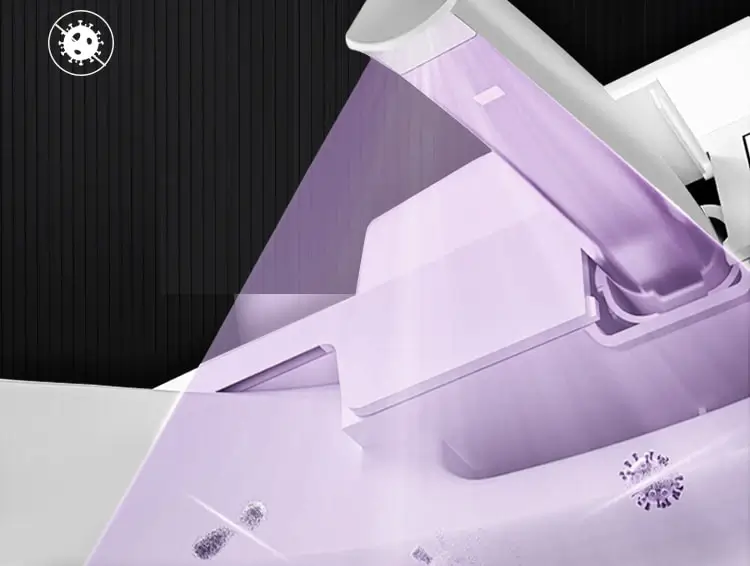When renovating a bathroom or selecting fixtures for a new home, one of the crucial decisions homeowners face is choosing between a one-piece toilet and a two-piece toilet. Each type has its own set of benefits and considerations, making it essential to understand the differences before making a purchase. This article will guide you through the key factors to consider, helping you decide which toilet is best suited for your needs and preferences.
One-Piece Toilets: An Overview

A one-piece toilet, as the name suggests, is a single unit where the tank and bowl are integrated into one seamless design. This type offers a sleek, modern look and has several benefits:
- Ease of Cleaning: With fewer crevices and joints, one-piece toilets are easier to clean compared to their two-piece counterparts. Their seamless design reduces the nooks where bacteria and grime can accumulate.
- Space Efficiency: Generally more compact, they are an excellent choice for smaller bathrooms or powder rooms where space is a premium.
- Durability: The single-unit construction reduces the risk of leaks between the tank and bowl, a common issue in two-piece designs.
- Installation: They are typically heavier than two-piece toilets but come as a complete unit, which can simplify the installation process.
However, one-piece toilets often come with a higher price tag due to the manufacturing process and the materials used. Their weight might also make installation more challenging without assistance.
| Aspect | One-Piece Toilets | Two-Piece Toilets |
|---|---|---|
| Ease of Cleaning | With fewer crevices and joints, one-piece toilets are easier to clean compared to their two-piece counterparts. Their seamless design reduces the nooks where bacteria and grime can accumulate. | Two-piece toilets may have more crevices and joints, making them slightly more challenging to clean thoroughly. |
| Space Efficiency | Generally more compact, they are an excellent choice for smaller bathrooms or powder rooms where space is a premium. | Two-piece toilets may take up slightly more space due to the separate tank and bowl configuration. |
| Durability | The single-unit construction reduces the risk of leaks between the tank and bowl, a common issue in two-piece designs. | Two-piece toilets may be more prone to leaks between the tank and bowl connection over time. |
| Installation | They are typically heavier than two-piece toilets but come as a complete unit, which can simplify the installation process. | Two-piece toilets require assembling the tank and bowl during installation, which can be slightly more complex. |
Two-Piece Toilets: An Overview
Two-piece toilets have a separate bowl and tank that are bolted together during installation. This traditional design has been around for decades and offers its own set of advantages:
- Cost-Effectiveness: Generally, two-piece toilets are less expensive than one-piece models, making them a budget-friendly option without compromising on functionality.
- Ease of Handling: Since the tank and bowl can be carried separately, they are easier to maneuver and install, especially in tight spaces or when navigating stairs.
- Repair and Replacement: Parts for two-piece toilets are readily available and often interchangeable between models and brands. If a part breaks, it can be easier and less costly to replace.
The main drawbacks include a more complex cleaning process due to the crevice between the tank and bowl and the potential for leaks at the joining point.
Making the Choice
When deciding between a one-piece and a two-piece toilet, consider the following factors:
- Budget: If cost is a significant concern, a two-piece toilet might be the more economical choice.
- Bathroom Size and Layout: For smaller bathrooms, a one-piece toilet’s compact design could be a better fit.
- Aesthetic Preference: If you prefer a modern, sleek look, one-piece toilets often offer more contemporary designs.
- Ease of Maintenance: If you prioritize ease of cleaning and maintenance, the seamless design of a one-piece toilet could be more appealing.
- Installation: Consider whether you will be installing the toilet yourself or hiring a professional. The weight of a one-piece toilet might require assistance.
Conclusion
Both one-piece and two-piece toilets have their merits, and the best choice depends on your specific needs, preferences, and bathroom layout. By considering factors like cost, design, ease of cleaning, and installation requirements, you can select a toilet that not only meets your functional needs but also complements the style of your bathroom. Remember, the right toilet can significantly impact your bathroom’s overall comfort and convenience, making this decision an important one.
